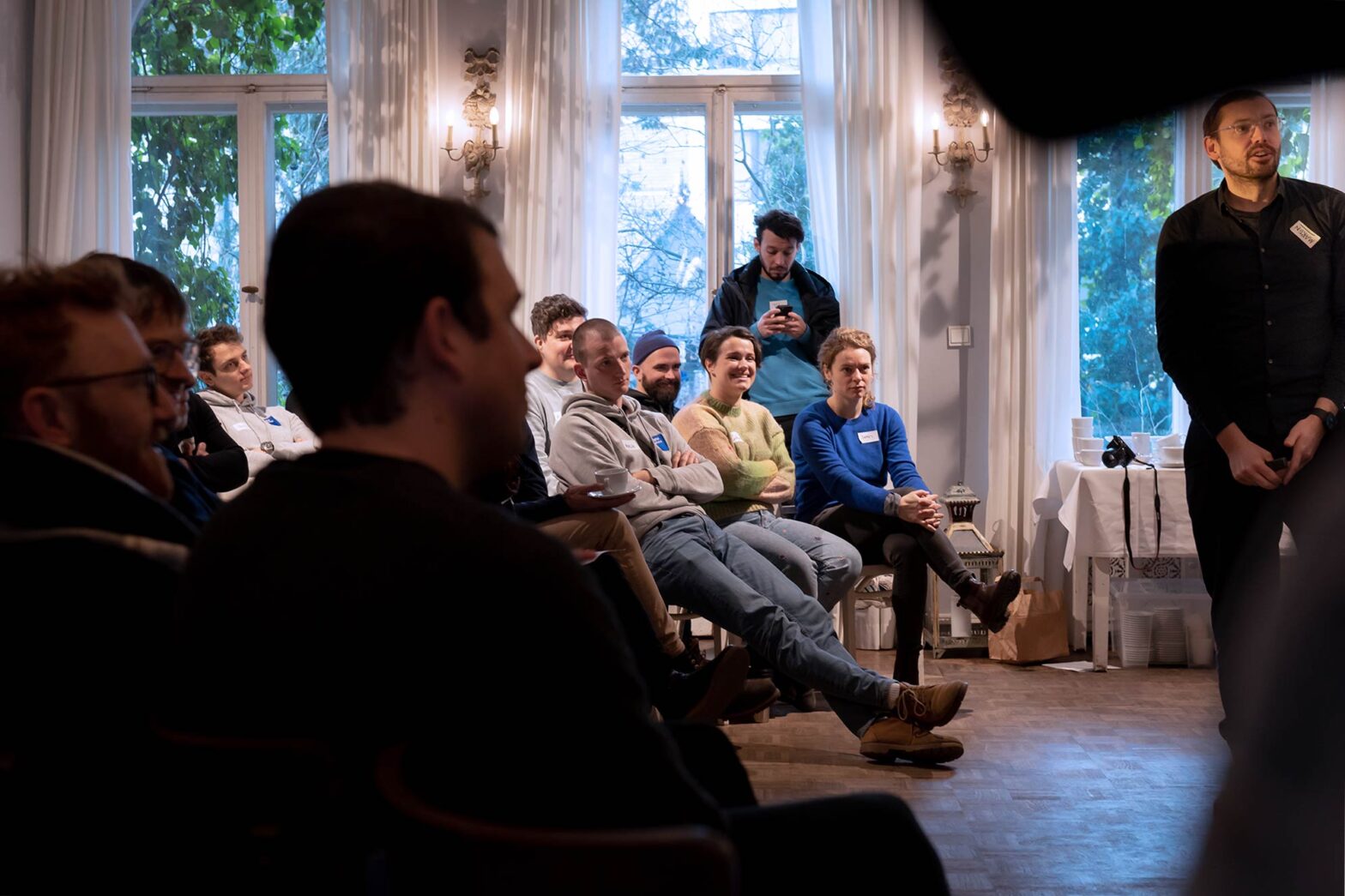You’d think it’s getting to a slower period of the year, but that hasn’t been the case. Not yet. This was the last full week of 2022 for me, though. And I’m looking forward to a little break.
On Thursday, we ran a delivery offsite event for everyone in the design, product and software engineering discipline. After repeatedly seeing the need for deeper discussion in recent weeks and months, the Head of Engineering, Christian, the Head of Product, Magdalena, and I managed to squeeze in a highly interactive day that almost everyone took part in.
Taking the time to talk about how we work
As the delivery teams at DigitalService almost quadrupled in 2022 – from 18 to 69 people – we needed to discuss various topics. We set up a full day in a city mansion in West Berlin with 3 rounds of unconference break-outs, a show & tell, plus some other interactive formats to receive feedback and help people get to know each other better.
Working with several ministries in 6 active projects and even more teams, various people had never met or talked to each other. So we wanted to use the day to:
- Discuss overarching topics touching all disciplines unrelated to the projects
- Have a direct exchange within the disciplines
- Clarify role distribution between the disciplines
- Collect input and give feedback
We wanted to hear how we succeeded against our values of working user-centred, agile and insight-driven. And what we should change or improve in 2023.
In the unconference section of the day, we managed to discuss 15 topics for 45 minutes each. The broad range of topics included project work-related ones like domain discovery, dual track (of discovery and delivery), or performance indicators of transformation. Equally important were cultural topics like learning to learn, giving room for quiet people, and meeting culture.
The show & tell section was the greatest surprise to me. For an hour, people from all 3 disciplines presented for 5 mins or less on anything they had done, tried and wanted to share. We saw a ‘speedback’ format a team had established, a demo for setting up KPI dashboards, a talk on how to translate a contract into a visual working tree and how one team uses a ‘riskiest hypothesis finder’.
According to the feedback received, many left the day and space fulfilled and inspired, which justifies an investment day like this.
A different kind of investment was our first regular accessibility introduction as part of the extended onboarding week. Nadine and I iterated and improved it from the dry run 2 weeks ago. We made it more interactive by adding a second short hands-on exercise. More exercises might follow in the near future. But I’m particularly keen on making assistive technologies tangible for training participants. I’m also glad adding this new part to the onboarding week was such a piece of cake. Once proposed, everyone just nodded and wanted to see it happen.
This round, we had 6 new starting participants. After we mentioned it on the accessibility channel on Slack, various colleagues who have been with the organisation for months or even years reached out, too. So we will open up the 60-minute training to more colleagues in the new year.
This week, I also had further discussions about the service standard – during the offsite and beyond. Before the Friday deadline, I submitted a talk proposal for the IT Planning Council’s annual conference. My suggested title and scope: “Service standard in practice – establishing agile, user-centred ways of working beyond the online access act”. I spoke at their conference in 2017 and 2018, and it’s time to put my newly acquired lens to good use there.
Also, the Federal government’s National Regulatory Control Council gave the service standard a push in this week’s annual report. In Germany, it was the first organisation associated with the Federal government to prominently demand a service standard in 2016 and then drafted a version in its 2018 annual report. So it has a track record of arguing for a more potent standard following international examples. This time, it asked for the standard to be turned into a statutory instrument. That would push things further than any other country, including the United Kingdom.
On a more lightweight note: Our teams received a few new stickers. The one for the ‘BundesIdent’ digital identity app is extra cute. It’s an anthropomorphic ID card resembling some of the illustrations for error screens in the app, which hopefully no one ever sees.
Before the end of the year, I want us to talk about the visual culture we have built over the past few months.
What’s next
In my last couple of working days for 2022, I’ll continue with feedback sessions, progress that blog post and sort out some other loose ends.

